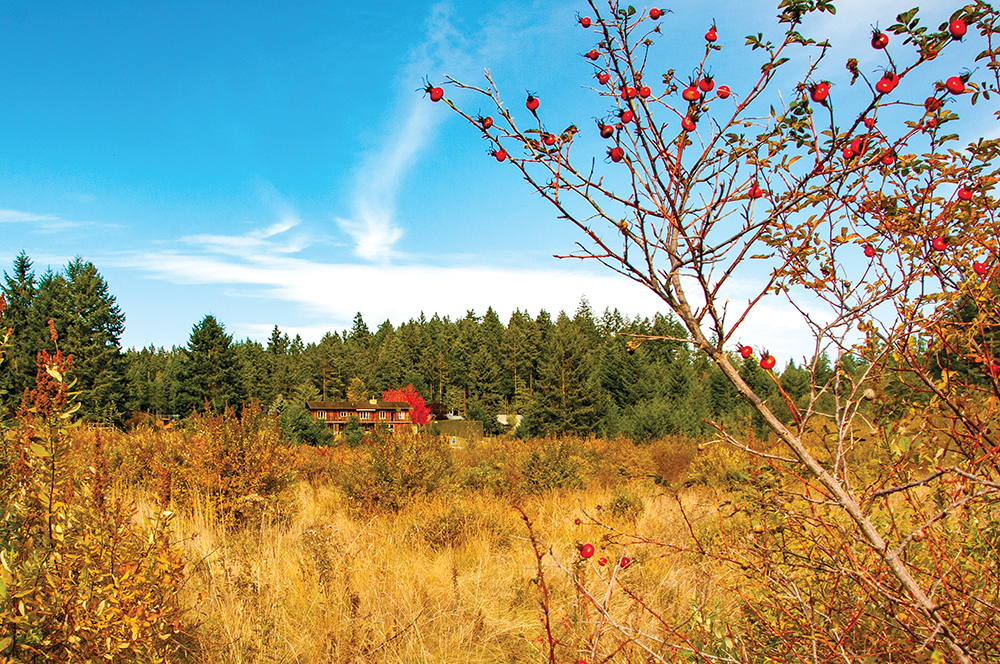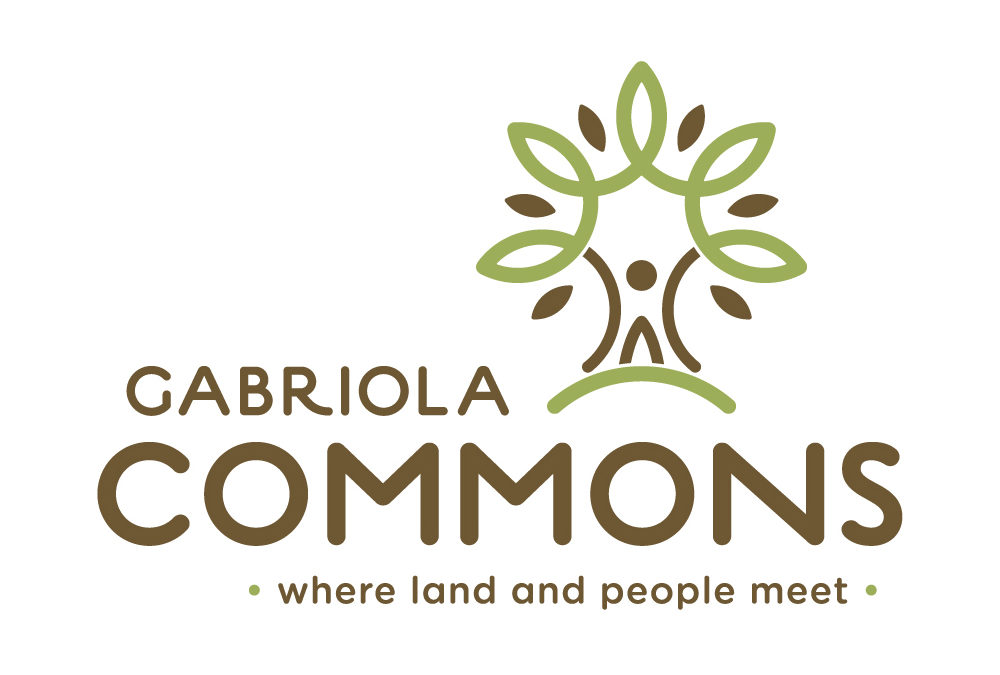
The Gabriola Commons looking from the beaver pond and south Commons area towards the main house on North Road. Photo courtesy Bill Pope
Heather Menzies
Gabriola Commons
Like other organizations emerging from pandemic restrictions, the Commons has been reflecting on where it stands. At some recent meetings, members of its many teams agreed that the Commons is more than just a venue maintained by a group of volunteers. They affirmed the wisdom of having spent five years persuading the Islands Trust and provincial government to approve adding a new zone to Gabriola’s Official Community Plan, to designate the 26 acres of land gifted by the Amazing Grace Ecological Society in 2005 as a “community commons” – the first of its kind in Canada.
As one person told a meeting: “The purpose of the Commons is to be a commons.”
A lot of effort plus generous and widespread donor support have gone into simply bringing the Commons into being, and paying off the mortgage. Apple trees, blueberry and haskap bushes were planted to create an orchard. Land for growing vegetables was set aside for allotment gardens and a kitchen garden next to the building where the old goat cheese-making factory was upgraded into a community kitchen. Trails, a boardwalk, extensive solar panelling and a stone labyrinth emerged. Bio-mapping of the Commons’ distinctive eco-niches was done, and an infrastructure of irrigation pipes was laid down, fed first from the pond alone and now from a reservoir the surface of which doubles as a performing arts space, its elegant tent provided and maintained by the Gabriola Arts Council.
Over the years, the Commons has also become a vibrant venue for major community events – such as the Fall Fair, the Farm to Table Feast and the Cultivate Festival – as well as innumerable gatherings in the farmhouse, the poetry yurt plus music, weddings and picnics on the grass.
But being a commons requires more than just ‘build it and they’ll come.’ It requires clearing space in the community’s imagination to revive commons ways of being, which date back to pre-modern, pre-colonial, even pre-feudal times. The commons’ heritage predates the invention of private property. Its roots lie in a community’s shared relationship with land that sustains them, culturally as well as economically, generation after generation. It was self-governing, with regulations and decision making all geared to sharing the land and sharing responsibility to sustain it.
This heritage hovers over many of the things that make the Gabriola Commons distinct. At its core is the relationship, with the primary one being an ecological one between the community and the land itself, in an ongoing commitment to mutual sustainability. Living such a relationship requires close, even empathetic attention, a willingness to listen not just to one another but also to what the trees need, and how far the pond water levels can be drawn down before the irrigation pump must be turned off, or how dry and worn the grass can become before no more wedding parties are okayed for the grounds.
This attentiveness is at play in the activities associated with the Trails and Green spaces team, the Farm team and the Property Stewardship team, especially during Saturday morning work bees followed by a bread-and-soup lunch over which what has been noticed is shared and discussed.
This same ethos, or commitment to listening and respect, informs how things are done at the Commons: through a network of self-governing teams, a monthly coordinating council and decision making based on listening for consensus. It also informs the unique approach to creating a conservation covenant for the Commons aimed at protecting the linked ecological, agricultural and social aspects of this shared land and the balance between them. It’s not conservation premised on keeping humans out, but conservation through responsible, stewarding relationships with the land – that is, responding to its needs so that while sustaining itself, it can also sustain the community agriculturally and socially.
To be a community commons takes time and patience — and the whole community. But with every one of us who grasps this larger purpose of the Commons and commits to helping revive an old way of relating to land, not as “it” but as the “thou” in an “I-thou” relationship, we are also learning to become “Indigenous to place.” As Robin Kimmerer, Potawatomi author of Braiding Sweetgrass,” explains: “Being Indigenous to place means to live as if we’ll be here for the long haul, to take care of the land as if our lives, both spiritual and material, depended on it. Because they do.”
Next instalment: Becoming involved in the Commons; becoming a Commoner.
Heather Menzies is a member of three Commons teams, and the author of the award-winning Reclaiming the Commons for the Common Good.





Recent Comments